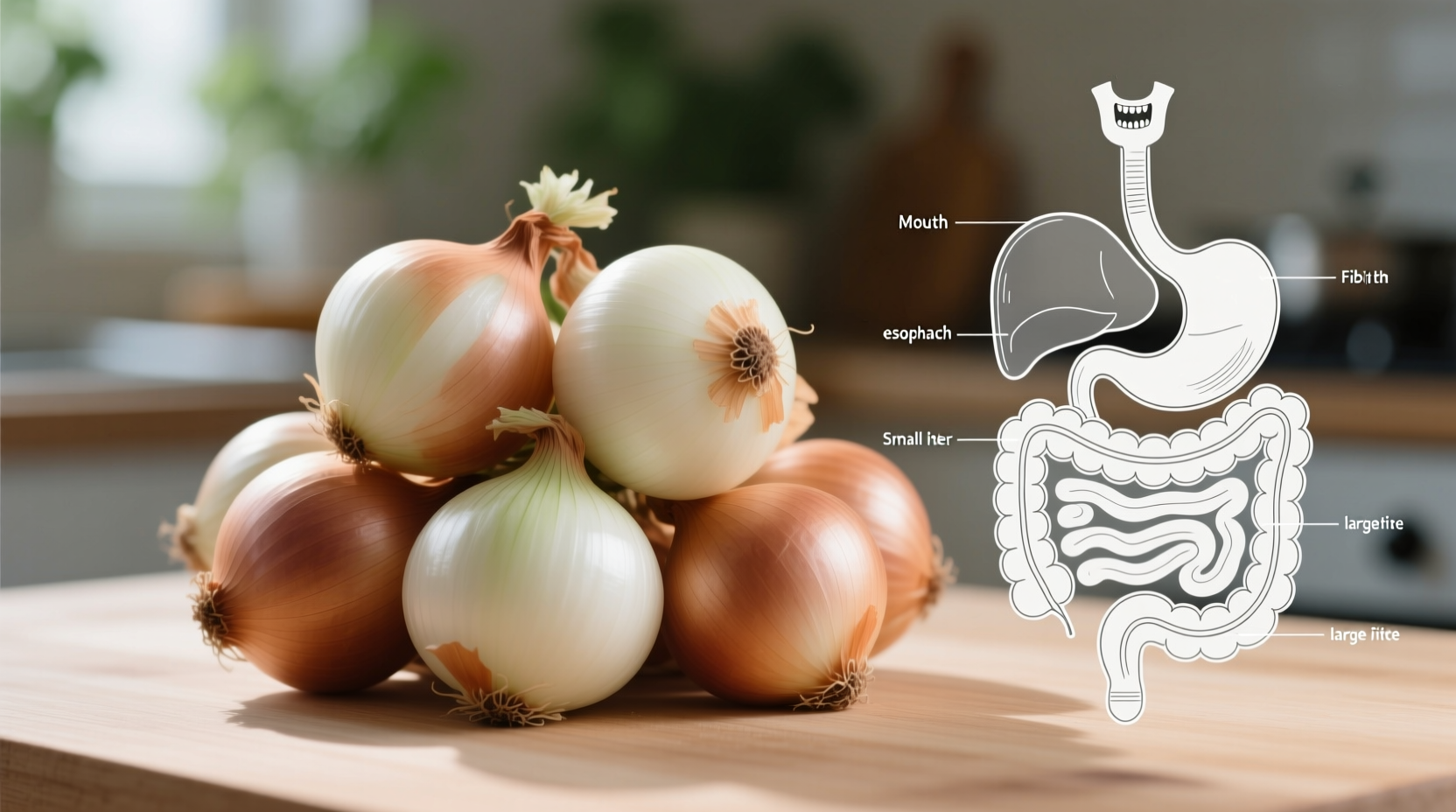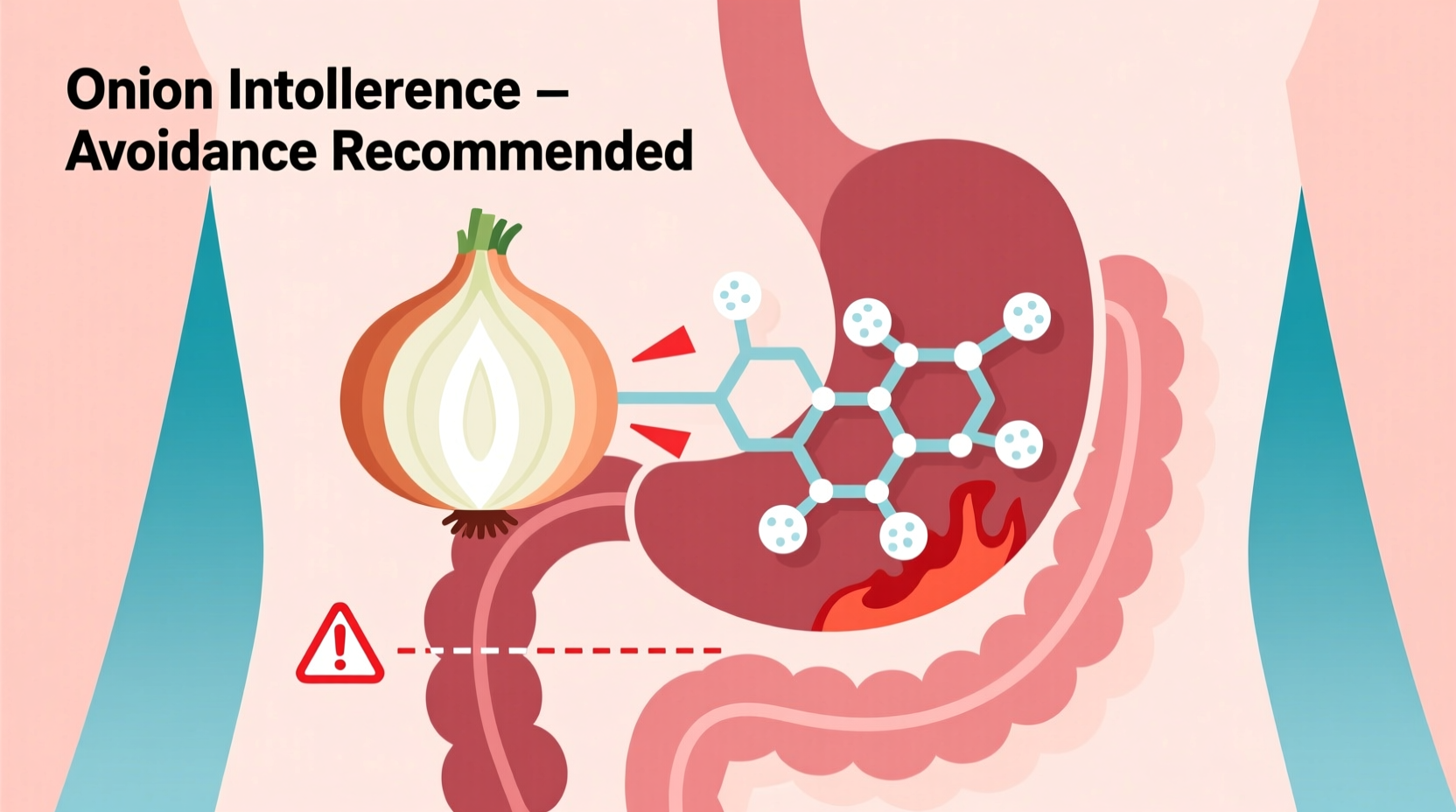What Exactly Is Onion Intolerance? Separating Fact From Fiction
Onion intolerance occurs when your digestive system can't properly break down certain compounds in onions, particularly fructans—a type of FODMAP (fermentable oligosaccharides, disaccharides, monosaccharides, and polyols). When these compounds reach your large intestine undigested, gut bacteria ferment them, producing gas and triggering uncomfortable symptoms.
Unlike a true onion allergy—which involves the immune system and can cause life-threatening reactions like anaphylaxis—onion intolerance affects only your digestive tract. The American College of Gastroenterology confirms that food intolerances like this are digestive issues, not immune responses, making them generally less dangerous but still significantly disruptive to daily life.
| Characteristic | Onion Intolerance | Onion Allergy | IBS |
|---|---|---|---|
| Primary System Affected | Digestive | Immune | Digestive |
| Onset of Symptoms | 30-120 minutes after consumption | Immediate (within minutes) | Variable, often chronic |
| Common Symptoms | Bloating, gas, abdominal pain | Hives, swelling, breathing difficulties | Abdominal pain, diarrhea/constipation |
| Diagnosis Method | Elimination diet, food diary | Skin prick test, blood test | Symptom assessment, exclusion of other conditions |
| Risk Level | Low (discomfort only) | High (potentially life-threatening) | Low (chronic discomfort) |
Your Symptom Timeline: What to Expect After Eating Onions
If you have onion intolerance, symptoms typically follow a predictable pattern:
- 0-30 minutes: No symptoms (onions moving through stomach)
- 30-90 minutes: Early symptoms begin (bloating, mild abdominal discomfort)
- 90-120 minutes: Peak symptoms (significant gas, cramping, possible diarrhea)
- 2-4 hours: Gradual symptom resolution as digestive process completes
This timeline differs significantly from food allergies, which produce immediate reactions, and from chronic conditions like IBS, which cause persistent symptoms unrelated to specific food triggers. According to research published in the Journal of Gastroenterology and Hepatology, approximately 73% of people with onion intolerance experience symptom onset within 90 minutes of consumption.

Getting an Accurate Diagnosis: Don't Self-Diagnose
Self-diagnosing onion intolerance can lead to unnecessary dietary restrictions or, worse, missing a more serious condition. The Mayo Clinic recommends this diagnostic pathway:
- Keep a detailed food and symptom diary for 2-3 weeks, noting everything you eat and any symptoms
- Consult your physician to rule out other conditions like IBS, inflammatory bowel disease, or actual food allergies
- Try an elimination diet under medical supervision—remove all onion-containing foods for 2-6 weeks
- Conduct a reintroduction phase to confirm onion as the trigger
Many people mistakenly attribute digestive issues to onions when they're actually sensitive to other FODMAPs. The NHS UK emphasizes that proper diagnosis prevents unnecessary dietary restrictions that could lead to nutritional deficiencies.
Practical Management Strategies That Actually Work
Once diagnosed, you'll need sustainable strategies to manage your onion intolerance without sacrificing flavor or nutrition:
Dietary Adjustments That Make a Difference
- Learn to identify hidden onion sources: Check labels for onion powder, garlic powder (often processed together), and terms like "natural flavors"
- Master onion-free cooking: Use asafoetida (hing) for savory depth, celery for crunch, or infused oils for flavor without the problematic compounds
- Try the "green onion trick": Some people tolerate the green parts of scallions better than bulb onions—test cautiously under guidance
Navigating Social Situations and Dining Out
Restaurant meals pose special challenges since onions are ubiquitous in cooking. When dining out:
- Ask specifically about "onion-free" options, not just "no onions"—many kitchens use onion broth or powder
- Request dishes prepared separately with fresh ingredients
- Carry a chef card explaining your needs in the kitchen's language
When to Seek Professional Guidance: Critical Boundaries
While onion intolerance is generally manageable through diet, certain situations require immediate medical attention:
| Situation | Self-Management OK? | Action Required |
|---|---|---|
| Occasional mild bloating after onion consumption | Yes | Track symptoms, consider reducing intake |
| Regular moderate symptoms (gas, cramps) | Limited | Consult dietitian for elimination diet guidance |
| Severe pain, vomiting, or blood in stool | No | Seek immediate medical evaluation |
| Symptoms persist after eliminating onions | No | Consult gastroenterologist for further testing |
The American Gastroenterological Association warns that persistent digestive symptoms could indicate more serious conditions like inflammatory bowel disease or celiac disease, which require specific medical treatment beyond dietary modification.
Long-Term Outlook: Can You Ever Eat Onions Again?
Many people wonder if onion intolerance is permanent. Research shows:
- About 40% of adults with onion intolerance experience improvement over 1-2 years with proper gut health management
- Temporary intolerances often develop after gastrointestinal infections or antibiotic use
- Working with a registered dietitian on gut-healing protocols may gradually increase tolerance
However, some people have lifelong sensitivity. The key is developing a sustainable approach that maintains nutritional balance while minimizing discomfort. Don't restrict foods unnecessarily—onions contain beneficial compounds like quercetin and prebiotic fibers that support overall health when tolerated.











 浙公网安备
33010002000092号
浙公网安备
33010002000092号 浙B2-20120091-4
浙B2-20120091-4